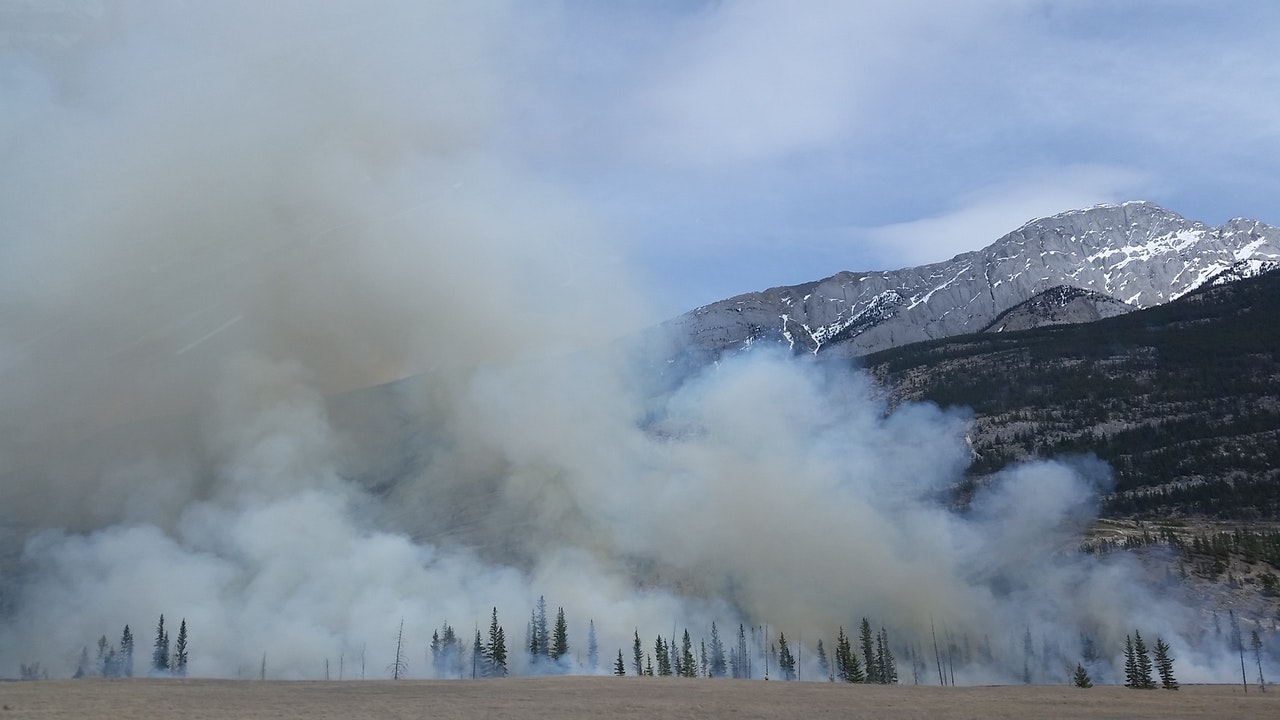Canada News
Pollution timebombs: Contaminated wetlands are ticking towards ignition

Even without metal pollution, these airborne particles can cause severe illness and death. (Pexels Photo)
Wetlands across the globe have long served as natural repositories for humanity’s toxic legacy, absorbing and retaining hundreds to thousands of years’ worth of pollution.
These swampy vaults have quietly been trapping air and water pollution for thousands of years, protecting the world from some of the worst effects of lead, mercury, copper, nickel and other poisonous materials.
Now, however, a combination of human disruptions and ever increasing wildfires threaten to open these vaults, unleashing their long dormant toxic contents upon the world.
Threats to releasing toxic legacies
The soil in many wetlands is composed of dead and decaying vegetation known as peat. Peat accumulates because perpetually sopping wetland conditions prevent the complete decomposition of dead vegetation. As these deposits accumulate, they form peatlands.
For centuries, peat has been drained, dried and extracted for heating fuel where wood is scarce. Though humans have long burned bricks of peat in their homes, climate change and wetland draining are drying entire wetlands, transforming them into perfect fuel for huge smoky wildfires.
Centuries of fallout from industrial processes such as smelting has deposited toxic metals in wetlands hundreds or even thousands of kilometres away from their point of origin. Human and industrial wastewater has, in places, added to this burden.
Wetlands have absorbed and stored these contaminants, holding them back from vulnerable aquatic ecosystems and saving humans from ingesting them.
Peat has a tremendous ability to capture and retain toxic metals by binding the metals to the peat itself through a process called adsorption. Once bound, the toxic metals are immobilized and pose little threat to the surrounding environment unless the peatland is disturbed, like from a wildfire.
Wetlands and fire
Human activities such as road building and resource extraction have seriously disrupted wetland ecosystems, leaving drained wetlands vulnerable to fire, as Canadians saw in the catastrophic Fort McMurray, Alta., wildfire of 2016.
As climate change and human actions further degrade wetlands, the resulting wildfires threaten to return humanity’s toxic legacy. This cycle carries frightening implications for the health of people and the environment.
In 2015, Indonesia recorded about 35,000 excess deaths after a major peatland fire. Meanwhile, Canada and the United States are far from immune from exposure to peat fire smoke. In early June 2023, cities as far away as Washington, D.C., and New York were blanketed in thick smoke from peat fires in northern Canada, which is home to many of the world’s peatlands.
At the same time, climate change is accelerating the drying of peatlands everywhere, turning their huge stores of carbon into a carbon burden. Furthermore, as concentrated pollutants build up in wetlands, the accumulation of toxic metals is killing plants that act as their natural lid, allowing moisture to escape and speeding the conversion of more wetlands to tinderboxes.
Once ignited, peatland fires are difficult to contain as they can smoulder for weeks, months or even years. They produce copious amounts of smoke and ash, filling the air with microscopic particles.
Even without metal pollution, these airborne particles can cause severe illness and death. Making a bad situation worse, toxic metals once safely stored in wetlands bind to these airborne particles and spread everywhere.
Restoring wetlands
As with many global environmental issues, it is easy to feel helpless to control such a huge and complex problem. Fortunately, nature-based solutions can have a substantial positive impact on keeping this toxic legacy from being released.
We can restore drying or dried-out wetlands back to their original state as functional ecosystems through, at the most basic level, preventing them from draining down canals and other human infrastructure. Indeed, even without further intervention, re-wetting wetlands can reduce their risk of wildfire ignition. However, restoration must be managed carefully, to avoid flushing toxic metals from wetlands into neighbouring streams, rivers and lakes.
To preserve wetland plants and return ecosystem functionality without releasing the stored toxic legacy, we need to bring back fire-resistant mosses such as Sphagnum. Recent research shows that old-fashioned peat “transplants” may be effective, though new restoration techniques in contaminated wetlands need to be further developed and tested.
Although ecosystem restoration can be costly in terms of time and money, actively restoring wetlands appears to be our best chance to defuse the ticking time-bomb that our pollution vaults have become. Preventing a pollution explosion demands urgent global research, investment and action. The cost of doing nothing will certainly be much greater.![]()
Colin McCarter, Assistant Professor, Faculty of Arts and Science, Nipissing University and Mike Waddington, Professor, School of Earth, Environment & Society, McMaster University
This article is republished from The Conversation under a Creative Commons license. Read the original article.





















